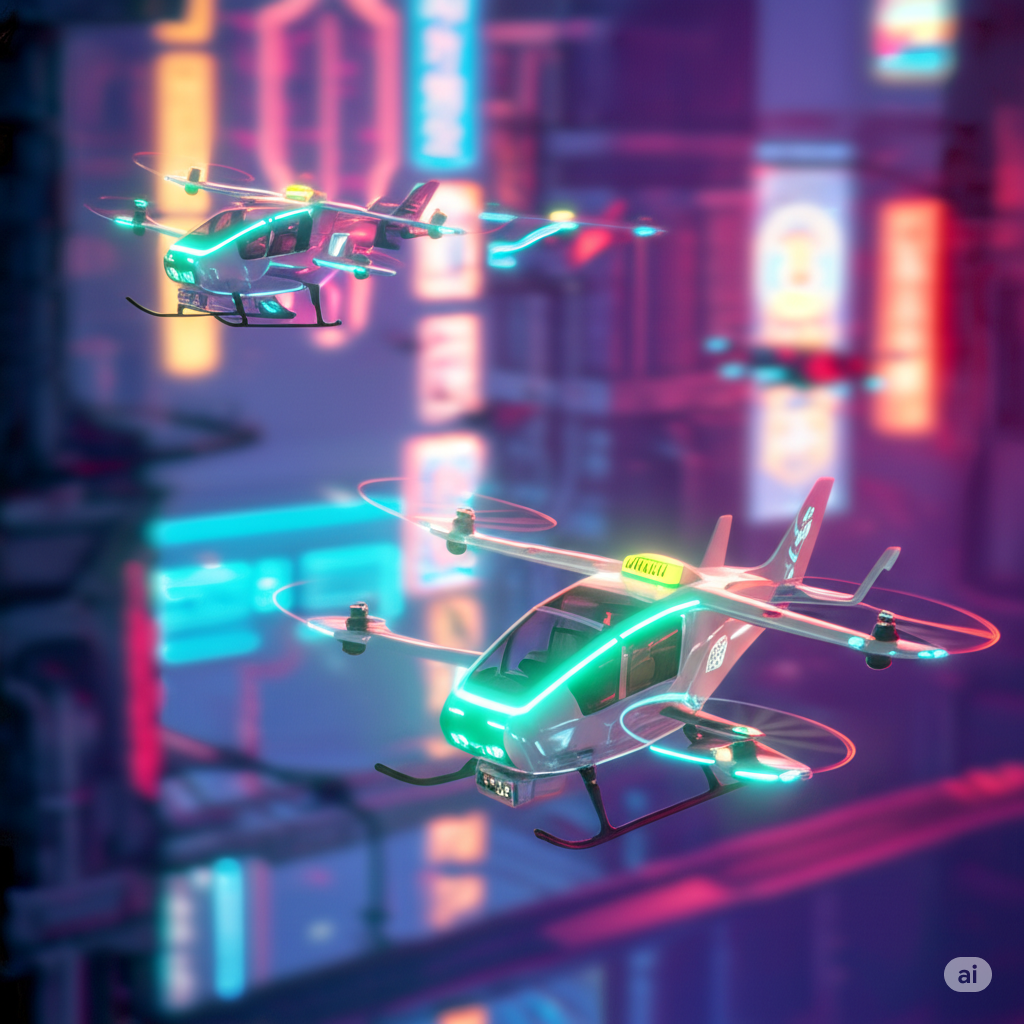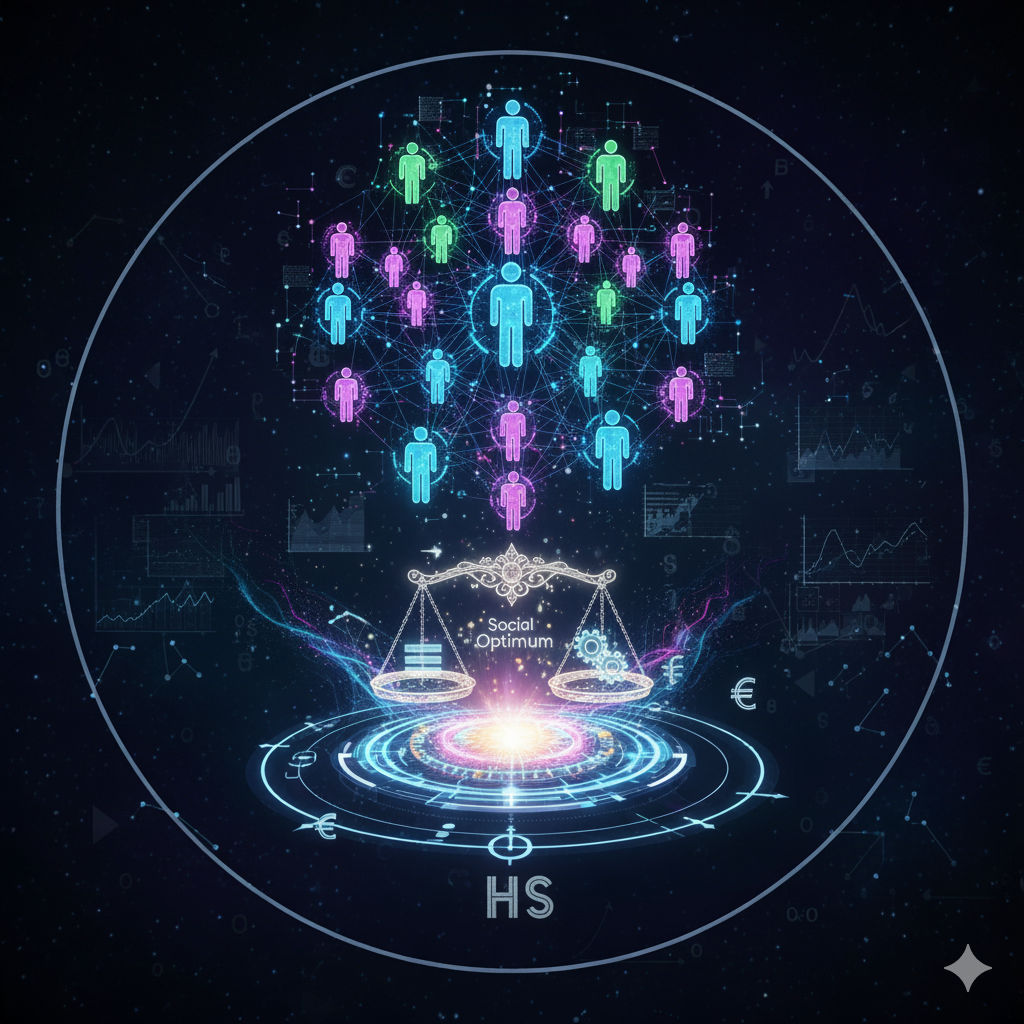Introduction
Artificial Intelligence (AI) is not just revolutionizing industries like healthcare and finance but is also taking flight—literally. The integration of AI with aerial technologies has given rise to AI-controlled air taxis and drones, paving the way for a new era in urban mobility, logistics, and emergency response.
AI-powered air taxis and drones are autonomous or semi-autonomous flying vehicles that use advanced algorithms to navigate through airspace, avoiding obstacles, optimizing routes, and ensuring safety. This article explores the core technologies, applications, benefits, regulatory challenges, and future prospects of AI-driven aerial mobility, with a special focus on its implications for smart cities and developing nations like India.
1. What Are AI-Controlled Air Taxis and Drones?
Air Taxis
Air taxis are electric vertical take-off and landing (eVTOL) aircraft designed for short-distance urban and regional transportation. Controlled by AI systems, they aim to reduce urban congestion and cut travel times.
- Typically designed for 2–6 passengers
- Can be piloted remotely or fully autonomous
- Intended for intra-city or inter-city travel (20–100 km range)
Drones
Drones, or Unmanned Aerial Vehicles (UAVs), are aircraft without a human pilot onboard. When integrated with AI, they can autonomously perform complex tasks such as:
- Real-time surveillance
- Delivery of goods or medicines
- Precision agriculture
- Infrastructure monitoring
2. Key Technologies Behind AI-Powered Aerial Vehicles
a) Artificial Intelligence and Machine Learning
AI enables air taxis and drones to:
- Analyze sensory input (vision, radar, lidar)
- Avoid obstacles and collisions
- Adapt to dynamic environments
- Make flight path decisions
- Perform autonomous landings
Machine learning algorithms are trained on massive flight datasets, enabling predictive behavior, emergency response, and optimized fuel or battery use.
b) Sensors and Navigation
- GPS & GNSS: For real-time positioning
- Lidar and Radar: Detect surrounding obstacles and terrain
- Computer Vision: Recognize landmarks, landing zones, and threats
- Inertial Measurement Units (IMU): Maintain flight stability
c) Connectivity and Communication
5G and satellite-based communication allow:
- Real-time data transmission
- Remote monitoring and control
- Air traffic coordination
d) Battery and Propulsion Technologies
- Electric propulsion systems offer cleaner, quieter flights.
- Battery optimization using AI enhances flight range and safety.
3. Applications of AI-Controlled Air Taxis and Drones
a) Urban Air Mobility (UAM)
Air taxis are a solution to traffic congestion in megacities. A 20-minute aerial ride can replace a 90-minute road journey, particularly in metropolitan areas like Mumbai, Delhi, or Bengaluru.
b) Logistics and Delivery
AI drones are being used for:
- Medical supply delivery in remote areas
- E-commerce delivery of lightweight packages
- Food delivery in smart cities
c) Disaster Management
AI drones provide real-time imagery and access to disaster-hit zones, helping with:
- Damage assessment
- Search and rescue operations
- Emergency supply delivery
d) Agriculture
- AI drones analyze crop health using multispectral imaging
- Precision spraying of fertilizers or pesticides
- Monitoring irrigation and pest activity
e) Surveillance and Security
Used by police, military, and private agencies for:
- Border patrol
- Traffic monitoring
- Public safety in large events
4. Advantages of AI-Controlled Aerial Vehicles
a) Enhanced Safety
AI systems reduce the risk of human error in navigation and operation. They can:
- Identify and avoid hazards in real-time
- Self-correct based on environmental changes
- Perform controlled emergency landings
b) Time and Cost Efficiency
- Reduced travel time in congested areas
- Lower operational costs over time due to automation
- Faster delivery cycles for e-commerce and logistics firms
c) Environmental Benefits
- Use of electric propulsion reduces greenhouse gas emissions
- Lesser dependency on fossil fuels
- Less noise pollution compared to helicopters
d) Accessibility and Connectivity
AI air taxis can connect hard-to-reach places like hill stations, islands, or rural interiors—greatly improving regional accessibility.
5. Challenges and Concerns
a) Airspace Regulation
Managing multiple autonomous aerial vehicles in a crowded urban airspace is complex. Key concerns include:
- Flight path coordination
- Collision avoidance with manned aircraft
- Integration with existing air traffic control systems
b) Technical Limitations
- Limited flight range due to battery constraints
- Adverse weather conditions affecting sensors
- Need for accurate mapping and real-time updates
c) Security and Hacking Risks
AI drones and taxis are susceptible to:
- Cyberattacks on navigation or communication systems
- Data breaches from aerial surveillance
- Unauthorized flight path manipulation
d) Public Acceptance and Ethics
- Concerns about safety of flying over populated areas
- Noise and visual pollution
- Privacy issues due to surveillance capabilities
e) Economic and Social Impact
- Potential job displacement in traditional transport and delivery sectors
- High initial infrastructure costs
- Inequity in access, especially in developing regions
6. Global Developments and Leading Players
a) Companies Leading the Revolution
- Volocopter (Germany): Electric air taxis with successful pilot tests in Singapore and Dubai
- Joby Aviation (USA): eVTOL aircraft with NASA collaboration
- EHang (China): Passenger drones already in commercial use
- Zipline (USA/Rwanda): Medical delivery drones with AI navigation
- Wing (Alphabet/Google): AI drones for food and parcel delivery
b) Country-Level Initiatives
- United Arab Emirates: Dubai aims to launch air taxi services before 2030
- USA: FAA is working on Urban Air Mobility (UAM) corridors
- Europe: The EASA has laid out guidelines for airworthiness of air taxis
- India: Drone Shakti mission under Union Budget 2022 promotes drone startups; India’s Drone Rules 2021 liberalize drone usage
7. India’s Perspective: Opportunities and Road Ahead
a) Potential Use Cases
- Drone delivery in remote tribal areas of Odisha or Northeast India
- Air taxis in congested metros like Mumbai and Delhi
- Drones for agriculture in Punjab and Maharashtra
- AI-powered surveillance in border areas like Ladakh and Arunachal Pradesh
b) Government Support
- Drone Rules 2021: Reduced compliance burden, increased payload allowance
- Production-Linked Incentive (PLI) Scheme: For drone manufacturing and AI integration
- Digital Sky Platform: Online portal for drone registration and flight permissions
- National UAM Policy (in pipeline): Framework for urban air taxi operations
c) Startups and Innovations
- Garuda Aerospace: AI-powered agricultural drones
- IdeaForge: UAV solutions for defence and industrial use
- Throttle Aerospace: Working on delivery drones with AI capabilities
8. Regulatory and Ethical Considerations
a) Need for New Aviation Laws
Traditional aviation laws are inadequate for handling low-altitude autonomous traffic. New norms must address:
- Drone traffic corridors
- AI decision-making accountability
- Data protection in aerial surveillance
b) Certification and Testing
Air taxis and drones must undergo:
- Airworthiness certification
- AI algorithm validation
- Safety compliance audits
c) Ethical Frameworks
- Transparent AI: Explainable and auditable decisions
- Non-discrimination: Avoiding algorithmic bias
- Public consultation: Ensuring community consent
9. The Future of AI-Controlled Air Mobility
a) Integrated Smart Transport Ecosystems
- Air taxis will work alongside ground-based autonomous vehicles
- Intermodal hubs for air-to-ground transitions
- Real-time AI traffic management systems
b) Hydrogen and Sustainable Fuel Integration
- Transition from electric to hydrogen-based propulsion
- Reduced carbon footprint
- Longer range and quicker refueling
c) AI and Swarm Intelligence
- Coordinated flying of multiple drones for joint tasks
- Disaster management, construction, and agriculture could benefit
- Real-time communication and task division between aerial vehicles
d) Personalized Urban Aviation
In the next two decades, AI air taxis could become personalized travel options:
- Subscription-based flying services
- Autonomous air taxis at airports and tech parks
- On-demand urban shuttle services
Conclusion
AI-controlled air taxis and drones symbolize the convergence of two cutting-edge technologies: aviation and artificial intelligence. They offer transformative potential in sectors as diverse as transport, healthcare, agriculture, and disaster management. While the road—or sky—ahead is filled with challenges in safety, regulation, and infrastructure, the benefits they promise are immense.
For a country like India, with its vast geography, dense cities, and underserved rural areas, AI-powered aerial vehicles could provide inclusive, fast, and environmentally sustainable solutions. However, careful planning, regulatory foresight, and investment in R&D will be essential to make this futuristic vision a practical reality.
As we prepare for the next leap in urban mobility, understanding the dynamics, challenges, and ethical dimensions of AI in the skies is not just important—it’s imperative.




